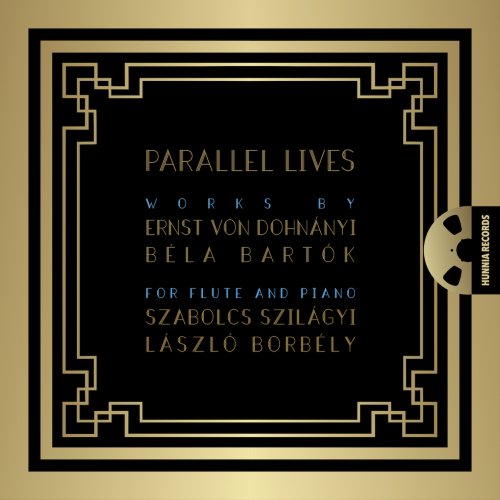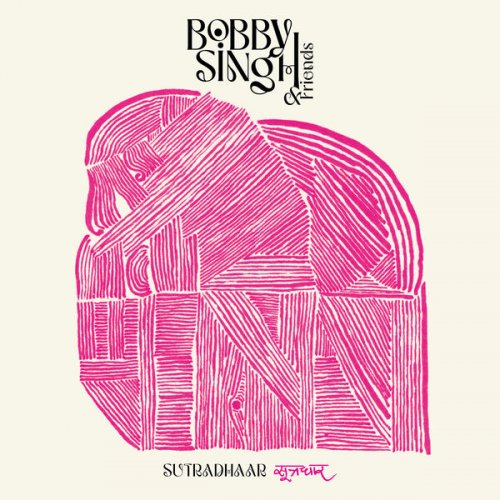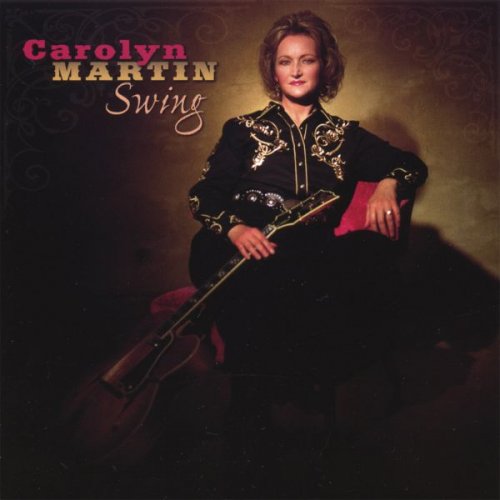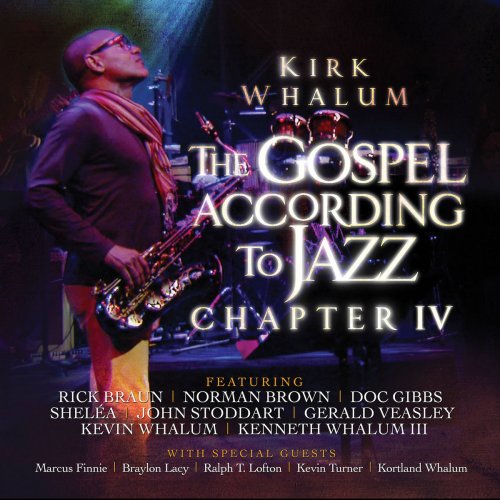Szabolcs Szilágyi & László Borbély - Parallel Lives - Works by Ernst von Dohnányi and Béla Bartók for flute and piano (2020) [Hi-Res]

Artist: Szabolcs Szilágyi, László Borbély
Title: Parallel Lives - Works by Ernst von Dohnányi and Béla Bartók for flute and piano
Year Of Release: 2020/2021
Label: Hunnia Records
Genre: Classical
Quality: flac lossless / flac 24bits - 192.0kHz +Booklet
Total Time: 00:53:05
Total Size: 219 mb / 1.64 gb
WebSite: Album Preview
TracklistTitle: Parallel Lives - Works by Ernst von Dohnányi and Béla Bartók for flute and piano
Year Of Release: 2020/2021
Label: Hunnia Records
Genre: Classical
Quality: flac lossless / flac 24bits - 192.0kHz +Booklet
Total Time: 00:53:05
Total Size: 219 mb / 1.64 gb
WebSite: Album Preview
01. 2 Pieces for Flute, Op. 48: No. 1, Aria for Flute and Piano
02. 2 Pieces for Flute, Op. 48: No. 2, Passacaglia for Solo Flute
03. 15 Hungarian Peasant Songs, Sz. 71: No. 1, Megkötöm lovamat. Rubato (Arr. for Flute and Piano)
04. 15 Hungarian Peasant Songs, Sz. 71: No. 2, Kit virágom rózsát adott. Andante (Arr. for Flute and Piano)
05. 15 Hungarian Peasant Songs, Sz. 71: No. 3, Aj, meg kell a búzának érni. Poco rubato (Arr. for Flute and Piano)
06. 15 Hungarian Peasant Songs, Sz. 71: No. 4, Kék nefelejcs ráhajlott a vállamra. Andante (Arr. for Flute and Piano)
07. 15 Hungarian Peasant Songs, Sz. 71: No. 5, Feleségem olyan tiszta. Scherzo (Arr. for Flute and Piano)
08. 15 Hungarian Peasant Songs, Sz. 71: No. 7, Arra gyere, amőrre én. Allegro (Arr. for Flute and Piano)
09. 15 Hungarian Peasant Songs, Sz. 71: No. 8, Fölmentem a szilvafára. Allegretto (Arr. for Flute and Piano)
10. 15 Hungarian Peasant Songs, Sz. 71: No. 9, Erre kakas, erre tyúk. Allegretto (Arr. for Flute and Piano)
11. 15 Hungarian Peasant Songs, Sz. 71: No. 10, Zöld erdőben a prücsök.. L'istesso (Arr. for Flute and Piano)
12. 15 Hungarian Peasant Songs, Sz. 71: No. 11, Nem vagy legény. Assai moderato (Arr. for Flute and Piano)
13. 15 Hungarian Peasant Songs, Sz. 71: No. 12, Beteg asszony, fáradt legény. Allegretto (Arr. for Flute and Piano)
14. 15 Hungarian Peasant Songs, Sz. 71: No. 13, Sári lovam a fakó. Poco più vivo (Arr. for Flute and Piano)
15. 15 Hungarian Peasant Songs, Sz. 71: No. 14, Összegyűltek, összegyűltek az izsapi lányok. Allegro (Arr. for Flute and Piano)
16. 15 Hungarian Peasant Songs, Sz. 71: No. 15, Duda nóta. Allegro (Arr. for Flute and Piano)
17. Violin Sonata, Op. 21: I. Allegro appassionato (Arr. for Flute and Piano)
18. Violin Sonata, Op. 21: II. Allegro ma con tenerezza (Arr. for Flute and Piano)
19. Violin Sonata, Op. 21: III. Vivace assai (Arr. for Flute and Piano)
20. Romanian Folk Dances, Sz. 56: No. 1, Joc cu bâtǎ. Allegro moderato (Arr. for Flute and Piano)
21. Romanian Folk Dances, Sz. 56: No. 2, Brâul. Allegro (Arr. for Flute and Piano)
22. Romanian Folk Dances, Sz. 56: No. 3, Pê-loc. Andante (Arr. for Flute and Piano)
23. Romanian Folk Dances, Sz. 56: No. 4, Buciumeana. Moderato (Arr. for Flute and Piano)
24. Romanian Folk Dances, Sz. 56: No. 5, Poargǎ româneascǎ. Allegro (Arr. for Flute and Piano)
25. Romanian Folk Dances, Sz. 56: No. 6, Mǎrunţel. Allegro (Arr. for Flute and Piano)
26. 3 Hungarian Folksongs from Csík, Sz. 35a: No. 1, The Peacock. Rubato (Arr. for Flute and Piano)
27. 3 Hungarian Folksongs from Csík, Sz. 35a: No. 2, At the Jánoshdia fairground. L'istesso tempo (Arr. for Flute and Piano)
28. 3 Hungarian Folksongs from Csík, Sz. 35a: No. 3, White Lily. Poco vivo (Arr. for Flute and Piano)
Listening to this album is a unique experience because the recording offers a selection of flute and piano pieces of two worldrenowned Hungarian composers: Béla Bartók (1881−1945) and Ernst von Dohnányi (1877−1960).
The names of Bartók and Dohnányi may seem unusual in a flute and piano programme, since although the latter did have some interest in the instrument in the last years of his life, Bartók did not compose pieces for solo flute or any significant chamber music where the flute was originally included. There might be several explanations for this. Flutist Szabolcs Szilágyi, who formulated the concept of this CD and is also one of the recording musicians, believes that although the German goldsmith Theobald Böhm (1794−1881), patented his new invention revolutionising flute playing already in 1847 1, for various reasons it had not yet become prevalent at the Budapest Academy of Music (Royal National Hungarian Academy of Music, at present: Liszt Academy of Music) where the two composers studied at the turn of the century. Furthermore, the Viennese flutes – also commonly referred to in professional circles as simple system flutes – used in Budapest and in German speaking areas were less suitable for performing complex chamber music or solo pieces, both in terms of their sound capabilities/potential and technical possibilities. Another explanation for Bartók's and Dohnányi’s reluctance may be that neither composer had friendships with remarkable flutists who could have inspired their work, despite the fact that the professor of the Royal National Hungarian Academy of Music as well as the first flutist of the Royal Hungarian Opera House was Adolph Burose (1858−1921). The flutist of German origin was also a much sought-after international soloist and the author of the first Hungarian language flute school, the two-volume Die Neue Grosse Flötenschule2 (the exact date of its publication is unknown). We should not be misled by the German title: the book was published as the study material of the Royal National Hungarian Academy of Music with German and Hungarian instructions. Both were official languages of the Austro-Hungarian Monarchy, and it was only natural that Burose wrote the instructions in his mother tongue. It is also likely that he spoke little or no Hungarian, because in the preface to the flute school he thanks his student, Dr August Alcsuti3 for the Hungarian translation. Burose was extremely broad-minded as it turns out from his work, which includes the fingering chart of both the Viennese and the Böhm systems4 , that he preferred the former. He even recommends specific exercises to practice the fingering of the Böhm system, which implies that he considered the Böhm system a deviation from the “normal instrument”. At this point, however, we have come full circle as we are back to square one, namely the restrictions due to the sound character and level of technical development of simple system flutes.
Mr. Szabolcs Szilágyi at the Sir James Galway Flute Festival 2012, Weggis, Switzerland. "Mr. Szilágyi’s playing of Ernst von Dohnányi : Passacaglia for flute solo OP. 48. No. 2, was an amazing display of complete mastery of the flute. He played this most difficult piece with a perfect technique and a deep understanding of the music. His stage presence charmed the audience who gave him a well deserved standing ova:on.” (Sir James Galway)
Szabolcs Szilágyi, flute
László Borbély, piano

![Rainer Brüninghaus, Kenny Wheeler, Jon Christensen & Brynjar Hoff - Freigeweht (1981/2025) [Hi-Res] Rainer Brüninghaus, Kenny Wheeler, Jon Christensen & Brynjar Hoff - Freigeweht (1981/2025) [Hi-Res]](https://www.dibpic.com/uploads/posts/2025-12/1766402111_cover.jpg)

![Lionel Hampton - Many Splendored Vibes (Remastered) (2022) [Hi-Res] Lionel Hampton - Many Splendored Vibes (Remastered) (2022) [Hi-Res]](https://www.dibpic.com/uploads/posts/2025-12/1766397160_lhsv500.jpg)


![Gianni Oddi - 3 (1974) [Vinyl] Gianni Oddi - 3 (1974) [Vinyl]](https://www.dibpic.com/uploads/posts/2025-12/1766644979_5.jpg)
![Colin James & The Little Big Band - Christmas (2007) [CD Rip] Colin James & The Little Big Band - Christmas (2007) [CD Rip]](https://www.dibpic.com/uploads/posts/2025-12/1766507683_folder.jpg)
